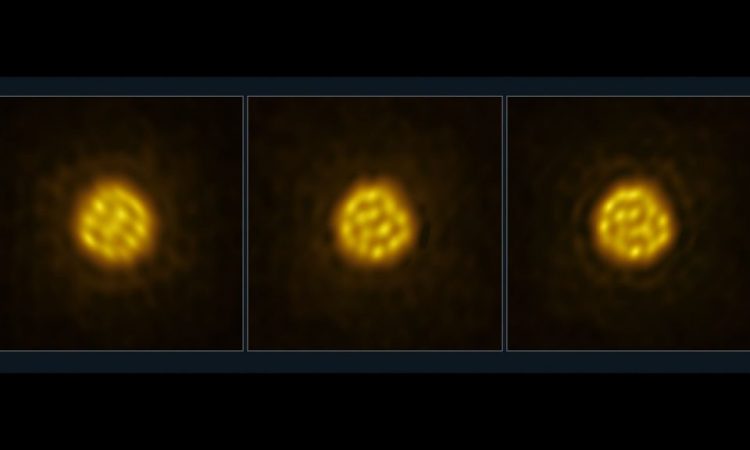
Astronomers have captured images of a star other than the Sun with enough detail to track the movement of gas forming bubbles on the surface.
For the first time, some astronomers have observed the images of a star other than the Sun with enough detail to trace the movement of the gas which forms bubbles on the surface. The images of the star, R Doradus, were obtained in July and August 2023 with ALMA (Atacama Large Millimeter/submillimeter Array), a telescope of which the ESO (European Southern Observatory) is a partner: they show gigantic bubbles of hot gas, 75 times, appearing on the surface and sinking back into the star’s interior faster than expected. “For the first time the bubbling surface of a real star can be shown in this way,” says Wouter Vlemmings, a professor at Chalmers University of Technology, Sweden, and lead author of the study published today in Nature. “We never expected the data to be of such high quality that we could see so much detail of the convection on the surface of the star.”
Advertisement
The movement of the glowing gas
Stars produce energy in their core thanks to nuclear fusion. This energy can be transported to the star’s surface in huge bubbles of hot gas that then cool and sink, like a . This mixing motion, known as convection, distributes heavy elements formed in the core, such as carbon and nitrogen, throughout the star. It is also thought to be responsible for the formation of stellar winds that carry elements throughout the cosmos to build new stars and planets.
Until now, convective motions had never been tracked in detail in stars other than the Sun. Using ALMA, the team was able to obtain high-resolution images of the surface of R Doradus over the course of a month. R Doradus is a red giant star, with a diameter of about 350 times that of the Sun, located about 180 from Earth in the constellation Dorado. Its large size and proximity to Earth make it an ideal target for detailed observations. Furthermore, its mass is similar to that of the Sun, meaning that R Doradus is probably quite similar to what our Sun will look like in five billion years, when it becomes a red giant.
“Convection creates the beautiful granular structure visible on the surface of the Sun, but it is difficult to see on other stars,” adds Theo Khouri, a researcher at Chalmers and co-author of the study. “With ALMA, we could now not only directly see the convective granules, with a size 75 times that of the Sun, but also measure their speed for the first time.”
The granules of R Doradus appear to move on a month-long cycle, faster than scientists expected based on the functioning of the . “We don’t yet know what the reason for this difference is. It appears that convection changes as a star ages in ways we don’t yet understand,” says Vlemmings. Observations like those made now on R Doradus help us understand how stars like the Sun behave, even when they become cold, large and boiling like R Doradus.
“It is spectacular to think that we can now directly visualize details on the surface of such distant stars and observe physics that until now was practically only observable for the Sun,” concludes Behzad Bojnodi Arbab, a doctoral student at Chalmers and involved in the study.
In its own small way, Passione Astronomia helps you understand how the universe works. And the universe works better if the people who are part of it are well informed: if they have read nonsense, lies, poisons, then it ends up as it ends up. It’s not going very well right now. This is why it is important that someone explains things well. Passion Astronomy does its best. !
Read more

